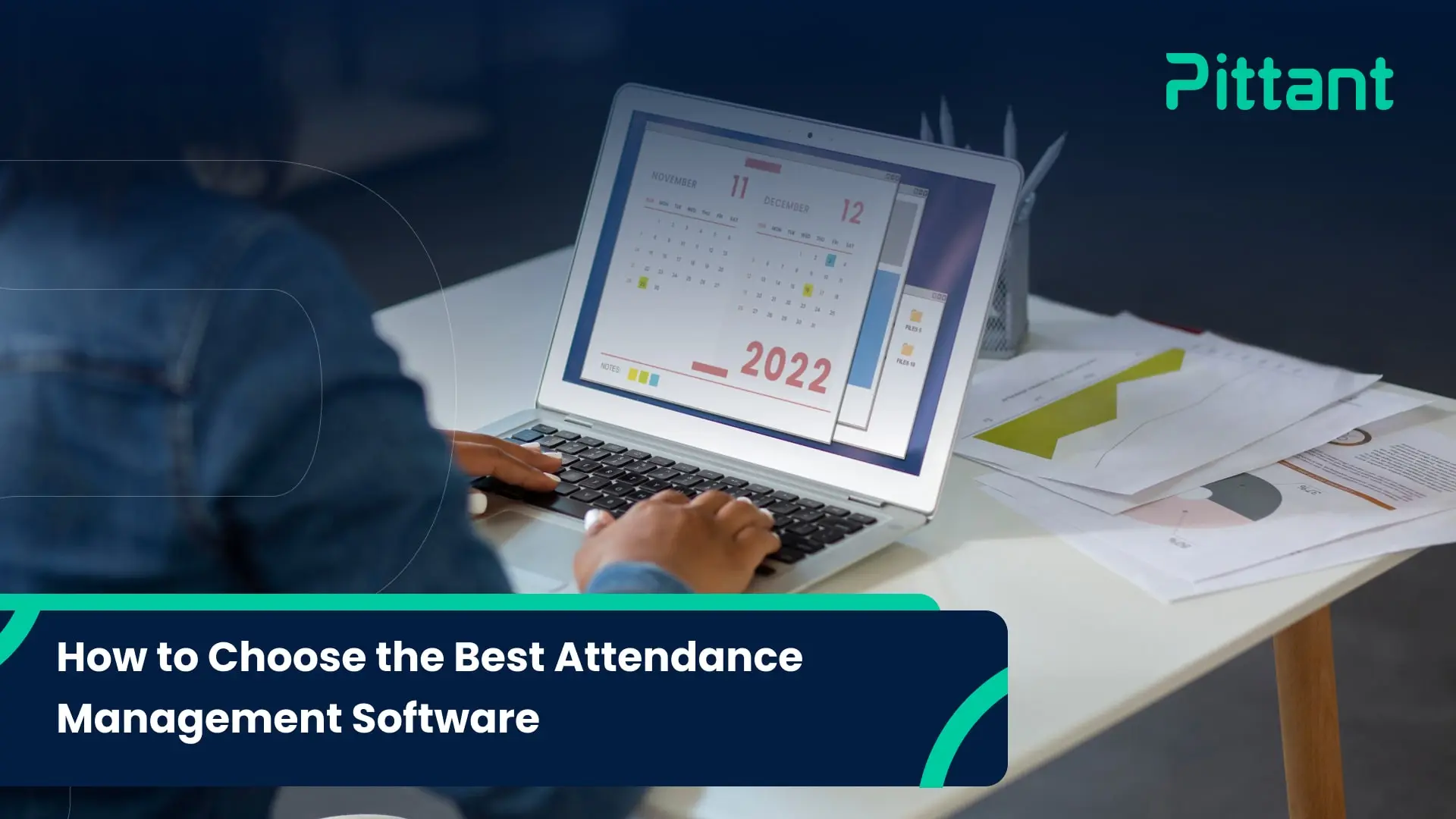When you are supposed to choose attendance management software, consider features like real-time tracking, integration with payroll systems, and robust reporting capabilities. Also, Consider usability, scalability, and customer support. Research reliable providers and read reviews to ensure you get software that meets your organization’s specific requirements and improves efficiency.
What are the needs for Choosing an Attendance Management Software?
Critical Thinking
The factors that are included in Critical thinking are analyzing information, evaluating facts, and making informed judgments. It requires engaging with ideas actively rather than merely taking information at its true value. Critical thinkers challenge assumptions and alternative viewpoints and reach logical conclusions based on sound evidence. The skill required for problem-solving, decision-making, and successful communication in a range of disciplines is critical thinking.
Strategic Decision Models
Strategic decision models are frameworks for analyzing and evaluating different choices and their possible results in the framework of strategic planning. The above models help decision-makers identify key elements, assess risks, and make informed choices that align with organizational goals. There are many examples of strategic decision models, but some of them are SWOT analysis, PEST analysis, Porter’s Five Forces, and decision trees.
HR Efficiency
HR performance refers to a human resources department carrying out its abilities in an effective and efficient way and executing its tasks and responsibilities. It includes optimizing processes, utilizing technology, and making sure that HR practices are consistent with business goals. A highly productive HR department can help with employee satisfaction, productivity, and overall business success.
Accountability
Accountability is a duty to take responsibility for one’s conduct and consequences. It includes being answerable to others, whether a boss, a client, or the public. Accountability is difficult for fostering trust, upholding ethical standards, and meeting organizational objectives. People tend to be motivated and dedicated to their work when they are held accountable.
Compliance Norms
Standards or guidelines that must be followed to comply with laws, rules, or industry standards are known as compliance norms. They may be mandated externally by trade associations or governmental entities, or they may be internal company policies. Compliance standards guarantee that companies conduct themselves morally, responsibly, and legally. An organization’s reputation may suffer, or penalties and fines may be imposed for breaking the rules.
Features to Consider in Attendance Management Software
When choosing attendance system software, look for features that simplify processes and give reliable data. Employee self-service, time tracking, absence management, overtime calculation, reporting, and analytics are important features. These features ensure accurate attendance tracking, compliance with labor regulations, and useful insights for HR decision-making.
Monitoring Attendance
Effective attendance monitoring is important to ensure staff productivity and compliance. It involves maintaining track of employee working hours, absences, and leaves. Organizations can use this effective employee attendance tracking system to track staff details, spot patterns, resolve absence concerns, and optimize staff planning. This leads to a more efficient and productive work environment.
Shift Management
Efficient shift management is important for enhancing workforce utilization and making sure there are sufficient staff levels. It includes scheduling shifts, managing overtime, and accommodating employee preferences. By implementing this efficient time and attendance system for shift management strategy, organizations can improve productivity, reduce labor costs, and enhance employee satisfaction.
Biometric Integration
Biometric integration improves security and accuracy in attendance management. Corporations can eliminate theft of time by implementing biometric techniques such as fingerprint or facial recognition. This not only enhances security but also simplifies the attendance monitoring process, lowering administrative strain.
Alerts and Notifications
Real-time alerts and notifications are difficult for successful attendance management. They give timely information about staff attendance, tardiness, and late arrivals. Organizations can handle attendance concerns proactively, maintain compliance with labor standards, and enhance overall staff efficiency by implementing personalized notifications.
Customizable Settings
Adjustable options allow organizations to customize attendance management software to their particular needs and preferences. Businesses can guarantee that the program meets their specific needs by customizing features such as work patterns, leave rules, and reporting formats. This adaptability enhances the user experience and the overall efficiency of attendance management operations.
Time and Cost Factors
Using attendance management software necessitates careful consideration of both financial and time constraints. Beginning with setup, training, and continuous maintenance might all require large expenses. However, the long-term advantages, such as increased productivity, lower labor costs, and greater compliance, frequently surpass the initial costs. To choose the best technology solution, companies should carefully consider their particular requirements and budget.
Easier Configuration
User-friendly setup choices are necessary for successful attendance management software. Organizations may quickly adjust the system to meet their specific requirements thanks to user-friendly interfaces and simple setup processes. This shortens implementation time, decreases training requirements, and assures that users can quickly explore and use the software’s capabilities.
Integration with HR modules
The seamless collaboration with HR modules, such as payment and time off management, accelerates HR operations and assures data consistency. By connecting attendance management software with other HR systems, businesses may minimize manual data entry, reduce errors, maintain effective attendance policy management, and obtain useful insights into labor efficiency and expenses. This connection boosts efficiency and improves the entire HR operations.
Benefits of Attendance Management Software for Your Business
Attendance management software provides improved efficiency, lower labor expenses, more compliance, and useful insights into staff productivity.
Hassle-free Workflow
A well-organized attendance management software automates procedures, decreasing manual duties and mistakes. Attendance monitoring, time off management, and reporting are all made easier with intuitive interfaces, automated processes, and user-friendly features. This eventually saves time, increases efficiency, and boosts employee happiness.
Better Shift Allocation
Reliable attendance management software allows companies to effectively manage their shift allocation, guaranteeing adequate personnel levels while reducing overtime expenditures. Businesses can build efficient schedules that meet operational requirements while also improving staff happiness by examining historical data and personnel availability. This creates a more productive and efficient staff.
Efficient Employee Engagement
Attendance management systems can help improve worker satisfaction by facilitating open communication about rules for attendance and expectations. It also allows employees to request time out and track their attendance. Honesty and convenience can promote a healthy work atmosphere and increase employee happiness.
Personalized Attendance Management
Tailored attendance management enables businesses to tailor their software to unique requirements and preferences. Customizing settings such as work schedules, leave rules, and reporting formats allows firms to guarantee that the system meets their specific needs. This adaptability improves the user experience and the overall efficiency of attendance management operations.
Minimal Errors
Attendance management software that includes automatic functions and data validation checks reduces inefficiencies and mistakes in attendance tracking. This lowers the likelihood of payroll inconsistencies, increases compliance, and ensures correct reporting. Companies can save time and money and promote a positive work environment by reducing errors.
Conclusion;
When choosing attendance software for management, look for features that reduce procedures, give accurate data, and increase employee engagement. Consider considerations such as usability, scalability, integration capabilities, and cost-effectiveness. By carefully examining these factors, businesses can select a dependable software solution that fulfills their specific requirements and helps to create a more effective and efficient workplace.
FAQs
What is the attendance management system?
An attendance management system tracks employee hours, manages time off, and calculates payroll, automating HR processes and improving efficiency.
How many types of attendance systems are there?
There are two main types of attendance systems: manual and automatic. Manual systems depend on physical sign-in sheets or registers, whereas automated systems use electronic devices such as biometric scanners or swipe cards.
What is a standard attendance policy?
An established attendance policy sets out an organization’s expectations for employee attendance, including tardiness, absences, and leave requests. It usually includes guidelines for tracking absences, asking for time off, and handling excessive absences.





